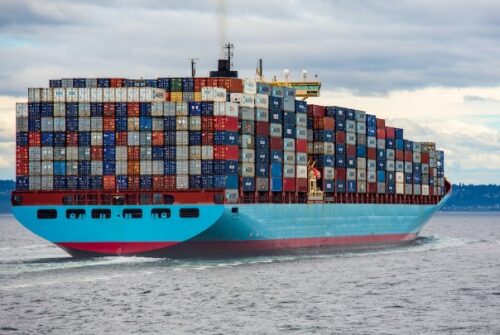“Off-Shoring”…
Once upon a time, that was a magical incantation for American manufacturers. Beginning in the ’70s, then accelerating into a crescendo in the ’90s, off-shoring became a mantra for manufacturers, big and small. The lure of lowering costs and maximizing profits by moving manufacturing to countries with lower labor costs and material sourcing, like China, Indonesia and Mexico, was just too strong to resist. 
The plastic injection molding industry was no exception. But that could be changing — “remolded,” if you will.
Why? Well, for one thing, the labor in the aforementioned “lower labor cost” countries is not as low-cost as it was before. Then there are supply-chain problems, as the world became painfully aware of during the pandemic. Suddenly, the reality of lockdowns in foreign countries, combined with freighters full of every possible product, including plastic injected molded ones, steaming endlessly in circles off the port of Long Beach CA, brought home the true costs of off-shoring.
Re-shoring advocacy groups like the Reshoring Initiative (RI) have quantified off-shoring’s negative bottom-line effects in an equation known as Total Cost of Ownership (TCO). TCO is a no-nonsense data-driven cost/benefit analysis that highlights not only the true costs of off-shoring , but the real benefits US companies realize when they decide to re-shore manufacturing back to the U.S. However, if off-shoring is still cheaper for any given company, TCO analysis is unbiased enough to say so.
Calculating “Total Cost of Ownership”
Let’s cut to the chase: the Reshoring Initiative estimates U.S. manufacturers underestimate off-shoring’s true costs by 20-30% when they make decisions based on price alone. Instead, companies should be considering additional costs like warehousing overhead, national security risk, public relations/climate change posture, corporate strategy and many other data points to determine whether or not to offshore operations.
Sound complicated? Not to fear: RI offers a tool called the Total Cost of Ownership Estimator to simplify the process. Endorsed by the U.S. Commerce Department, the estimator imports (no pun intended!) 30 cost factors from various sources, categorizes those costs, then provides a five-year TCO forecast to give a better overall picture of what each source — domestic and international — will cost a company.
NON-TANGIBLE BENEFITS
Financial ramifications can be objectively calculated through the TCO tool, but reshoring/offshoring cost/benefit analysis goes beyond just the “Benjamins.”
Among them:
Lead time
Considering that the very premise of offshoring operations involves the movement of goods, materials and services to far away lands, it’s axiomatic that lead times are dramatically increased. Longer lead times are a headache for manufacturers, especially if one of their customer demands a change and it’s too late to make it once the order has been placed. Re-shoring can drastically shorten lead times and enables manufacturers to make changes quickly.
Quality control
It’s an issue with off-shoring, as any off-shoring company will admit. Many times third-party vendors in other lands just aren’t as invested in zero-defects. There are also rampant cases of intellectual property theft, sometimes with the approval and assistance of foreign governments.
Regulation Compliance
Overseas regulation can be a nightmare, and carries real financial costs in terms of time and/or penalties. Calculating taxes and filling out forms in generally much easier in the US than overseas.
Harm to the Environment/Climate
Fewer and less enforced environmental standards in other countries, combined with the negative environmental effects of ships, trucks, planes and trains, means off-shoring is far worse for the planet than re-shoring.
Final Thoughts
Needless to say, manufacturing in the United States is simply good for the country as a whole. It helps the trade deficit, creates job opportunities and keeps the U.S. competitive in manufacturing innovation. What’s more, it promotes manufacturing as a solid career path for skilled workers.
Many plastic injection molders have done the math and decided re-shoring “shore” makes a lot of sense.